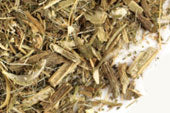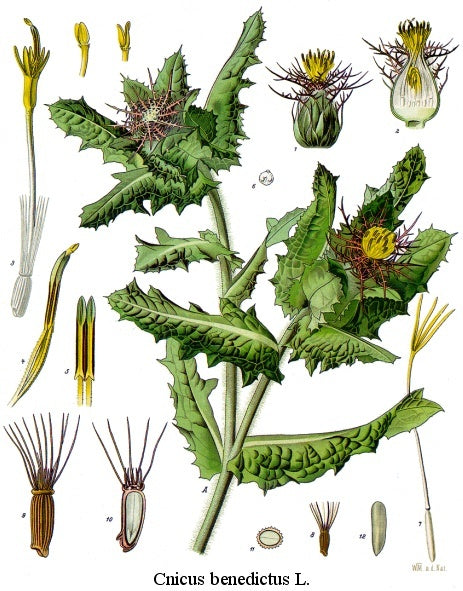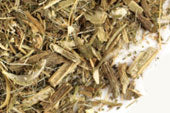Blessed thistle cut & sifted
Blessed thistle cut & sifted
Couldn't load pickup availability
Blessed Thistle
Cnicus Benedictus
Step into the rich, storied heritage of Blessed Thistle (Cnicus benedictus), a Mediterranean treasure cultivated since Medieval times in monastery gardens. Known as "Holy Thistle" or "St. Benedict's Thistle," this herb was once a prized remedy for ailments of all kinds, even earning its name through legend and lore. Don't confuse blessed thistle with milk thistle. These are not the same.
Our hand-cut and sifted Blessed Thistle offers a host of potential benefits. Packed with tannins and cnicin, this bitter herb has been traditionally used to promote healthy digestion, soothe minor skin irritations, and support a natural detox by enhancing liver function. Nursing mothers have also turned to Blessed Thistle to support lactation and prevent mastitis, though it should always be avoided during pregnancy.
Savor its heritage in a cup –
Blessed thistle tea recipe
- Mix 1 tsp blessed thistle herb with another tea to counter the bitter taste
- Add 1 cup boiled water to the mixture
- Let steep for 5-10 minutes
- Remove tea blend and add honey or other natural sweeteners
Its distinctively bitter notes can be softened with honey or blended with other teas to create a soothing, restorative infusion. For extra versatility, use Blessed Thistle in tinctures, tonics, or even to elevate your homemade bitters.
Whether used for its herbal tradition or intriguing flavor, Blessed Thistle brings a bit of ancient wisdom to your wellness routine. Please note, while this herb has a celebrated past, its uses rely on anecdotal evidence and should always be savored with moderation. Consult with a healthcare professional for any specific health concerns.
Bring a piece of history (and a touch of the extraordinary) into your kitchen with our premium cut & sifted Blessed Thistle.
Share


